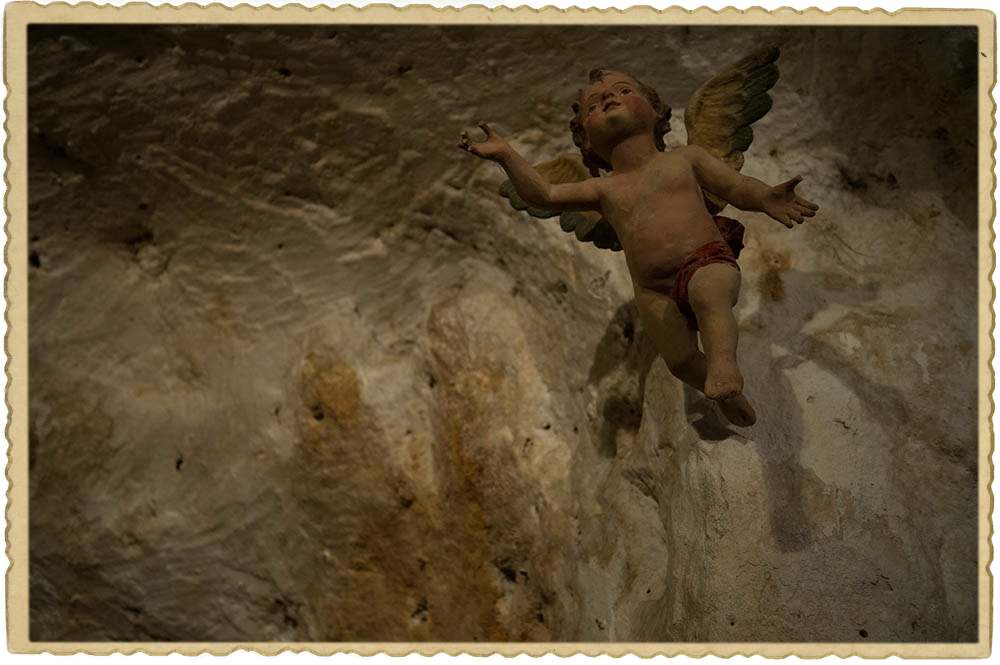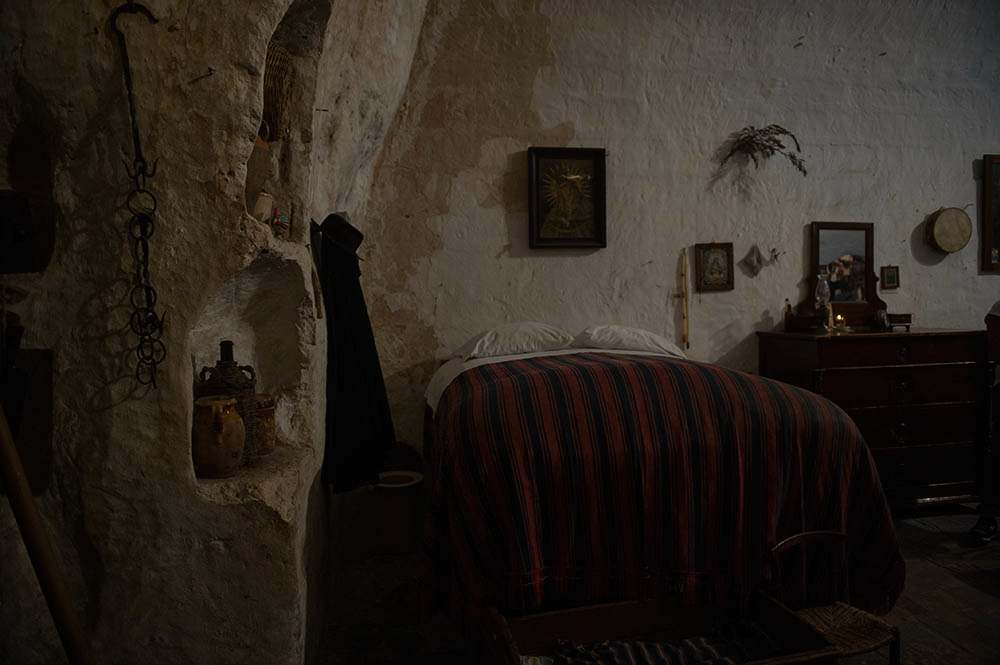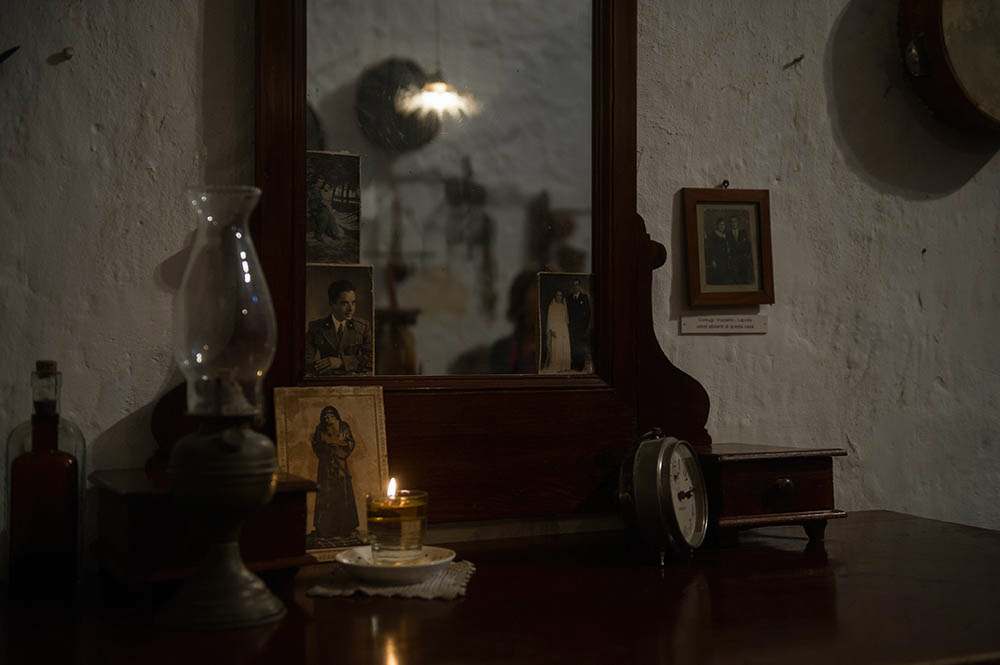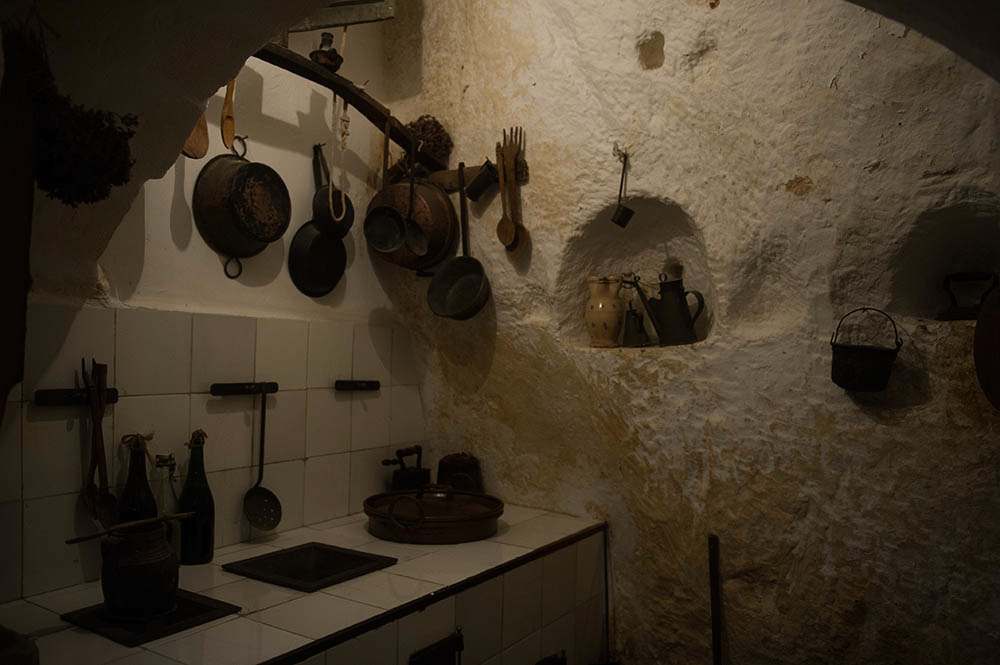Strolling through the Sassi today one almost can´t imagine how living in the caves had been until the 1950ies. Whole families and their live stock lived cheeck by jowl, without running water and other modern facilities.
It’s difficult to imagine that Matera’s ancient warren was known not too long ago as “the shame of Italy” for its dismal poverty. In the 1950s, the entire population of roughly 16,000 people, mostly peasants and farmers, were relocated from the Sassi to new housing projects in an ill-conceived government program, leaving it an empty shell. (Smithsonian Magazine)
Today some of these former homes have been restored as little museums – like the Casa Grotto di Vico Solitario – for one or two Euros you´ll get a little glimpse of what life may have looked liked. Inhabited until 1957 by Vico Solitario, his family and his animals.
The Casa Grotta tells the story of the people that lived in the Sassi. In the large one room area, partly dug out of the rock and partly constructed, the furniture is positioned so as to create smaller areas: the hearth with the stove, a small table in the centre of the room, a bed with two iron trestles on which wooden planks were placed, supporting a mattress made out of corn leaves.
In front of the bed, in between the cave walls, there was a trough where the mule was tied. A round hole was used as a cesspit, or as a place to keep straw. (Case Museuo Italia)







Leave a Reply